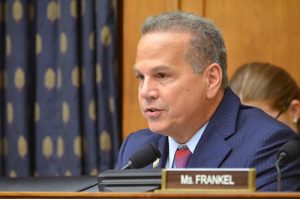Congress could level the playing field for independent app developers by looking to regulatory templates in music.
Last week, the European Commission announced it was investigating Apple’s treatment of independent app developers. The EC’s investigation appears to focus on the scope and size of the commissions that developers must pay to access Apple’s customers in the App Store.
The investigation reportedly builds on a complaint from Spotify, the streaming music service, which asserts that Apple’s hefty commissions on subscriptions by formerly ad-supported customers—which can reach up to 30 percent—are exploitative and potentially motivated by reasons relating to Apple’s competitive streaming service.
Part of the EC’s concern is the misappropriation of a potential rival’s data and the unlevel competition between an independent app like Spotify and Apple’s similarly situated app. As Randy Picker notes in a companion ProMarket piece, variations in Apple’s commissions do not appear to be correlated with Apple’s owning a rival app, which suggests that the exploitative fee issue is different from the problem for which the EC is investigating Amazon and Google. I’ve written about how to address misappropriation and discrimination here.
Spotify is not the only app to cry foul. Email service provider Hey similarly alleged that Apple required the upstart to permit in-app payments that could be monitored and thus tolled by Apple. And Epic Games complained that Apple takes a cut of revenue from Fortnite players for digital currency that can be redeemed for in-game items.
Adding to Apple’s very bad week, Rep. David Cicilline (D-RI), the chair of the House antitrust subcommittee, characterized Apple’s fees as “highway robbery.” While the tendency of the tech press and certain antitrust advocates is to view this conduct as Apple flouting antitrust law, as an antitrust practitioner, I see it somewhat differently—namely, whether policymakers can level the playing field between atomistic app developers on the one hand and a dominant platform on the other.

I put this question to Twitter on Saturday: Why do we allow certain music rights holders to collectively bargain with online streaming platforms, but tell news publishers they are on their own in dealings with social media platforms like Facebook, and tell app developers they are on their own with app platforms like Apple? The responses were illuminating. (It bears noting that Rep. Cicilline has a bill that would allow news publishers to collectively bargain with Facebook and Google, and I have written in support of that bill together with Sanjukta Paul).
According to Paul, who is an assistant professor of law at Wayne State, property and quasi-property rights are sometimes among the bases for permitting coordination beyond firm boundaries, and in music those sorts of rights happen to support a form of coordination that is somewhat “more horizontal and democratic.”
In Louis Brandeis’s era, notes Paul, small merchants and producers also tried to expand IP-like theories in order to justify coordinated bargaining to counter the power of large consolidated actors; however, most of the time the property justification for coordination is “ultimately allied with [the same] top-down concentration” that tolerates dominant platforms. (For more on how quasi-property rights can be the basis for coordination beyond a firm’s boundaries, see Paul’s recent UCLA Law Review paper.)
As with any analogy, the way we permit music rights holders to coordinate in their dealings with dominant platforms is not the basis of the policy intervention; it is simply a lens through which the problem can be understood. Instead, the basis for intervention is three-fold.
First, in the short run, an exploitative tax could reduce app usage to the extent that the tax is passed onto end-users by app developers in the form of higher app prices. As Jared Newman reports, “Some services charge more through the App Store than they do elsewhere to offset Apple’s 30% cut, while others must use cryptic messaging to explain why users can’t sign up directly through the app.”
Second, and also in the short run, there is a concern that Apple’s commission might distort the design the choices of app developers: As Kara Swisher notes, “some companies try to minimize in-app transactions, either by avoiding offering in-app subscriptions at all (Netflix) or charging more that particular sign-up (Spotify)” to cover the tax. Hey reportedly created a free version of its app to remain in compliance with Apple’s rules, where users can try the service with a randomized email address.
Third, in the long run, if independent apps believe that the fruits of their labor will be appropriated by Apple, either via the tax or via cloning and self-preferencing in the App Store, then edge innovation could be damaged.
To be fair, music is protected by copyright, whereas app developing and writing news/content effectively are not. For example, you can protect the code but critically not the functionality of an app. And copyright protection in news is thin. But these subtle differences in copyright protection seem like a weak reason to ignore the plight of atomistic content creators negotiating with a dominant platform like Apple. We similarly permit professional sports athletes to coordinate in their dealings with monopoly platforms (the leagues), and intellectual property is not the basis there.
“More antitrust scrutiny of the platforms isn’t going to bring relief to atomistic content providers, unless Apple can somehow be cowered into changing its behavior by the mere threat of antitrust investigations. “
The mechanical royalty rates for music publishers, who administer rights for songwriters, are set in adversarial, administrative proceedings by the Copyright Royalty Board (CRB), and thus apply to all publishers simultaneously—that is, the publishers don’t have to negotiate individually with the platforms covered by the statutes. In that sense, the bargaining is collective.
As helpfully explained by Meredith Rose, policy counsel at Public Knowledge, while music publishers are regulated via rate courts, “labels are essentially unregulated and theoretically subject to antitrust scrutiny for acting in concert (pun very appreciated).” Music copyright is bifurcated, and for those who want to learn more, I suggest reading Rose’s blog.
While the CRB doesn’t cover all property rights, the publishers/songwriters and performers/labels are advocating towards the same end—namely, a bigger slice of the pie for rights holders—and some coordination is occurring among input providers that results in higher music shares. As Rose points out, the fact that the three biggest publishers (songwriting side) and the three biggest labels (recording artist side) are owned by the same three companies supports this thesis. In part because of such coordination (and in part because of the copyright protection), music right holders are able to command between 65 and 70 percent of the revenues generated by an online streaming service such as Spotify.
In contrast, where these rights are not similarly protected and music shares are not collectively bargained, music rights holders keep a significantly smaller share of revenues earned by YouTube, another dominant platform, as noted by the late Alan Krueger in Rockonomics.
When a headhunter connects an economist to a consulting firm, her finder’s fee is based on the economist’s first-year billings. Similarly, when an agent sells a life insurance policy, her commissions are tied to the first-year premiums. At some point, the matchmaking value runs its course. By this logic, Apple’s claims on ancillary or distant revenues such as in-app purchases or purchases made (say) two years after downloading the app seem weaker than its claims on initial subscriptions or in-app purchases made closer to the initial download.
Newman reports that Apple’s fee on subscription revenues falls from 30 to 15 percent, but only after one year under the 30 percent rate. Thus, if a streaming music customer converts from an ad-supported plan to a paid subscription in year two, Apple’s tax on those revenues would still be 30 percent in year two.
When app developers are forced to bargain with Apple individually, Apple is able to dictate the terms. But a coalition of app developers coordinating their demands might be able to extract a better outcome.
If we think that an online platform is exercising power vis-à-vis atomistic input providers, the natural policy intervention is to level the playing the field by permitting the input providers to collectively bargain for their share of revenues. As Matt Stoller points out in his blog Big, Netflix, Dropbox, and Uber have special arrangements with Apple, “probably because they are too big for Apple to push around.” In addition to signaling market power, such price discrimination implies the lack of countervailing power among smaller app developers.
On the other hand, if Apple’s exploitative tax is supported via some restraint—imposed on the platform’s customers or suppliers—then we can attack the problem via antitrust under Section 2. For example, Apple’s restrictions on a developer’s ability to steer customers to the web for purchases using (say) lower prices as in inducement seems related to American Express’s anti-steering rules, which came under antitrust scrutiny.
But in the absence of a restraint, we can’t prosecute a dominant platform provider under antitrust merely for flexing its monopoly muscles. Unlike the EU, we don’t have an abuse of dominance standard here.
More antitrust scrutiny of the platforms isn’t going to bring relief to atomistic content providers, unless Apple can somehow be cowered into changing its behavior by the mere threat of antitrust investigations. Even if we breathe life into a third or fourth app platform (beyond Google and Apple), app developers will still be relatively atomistic.
Ironically, we might need “less” antitrust in the form of permitting these vulnerable input providers to band together in their dealings with dominant platforms, potentially in violation of antitrust’s prohibitions on such coordination across firm boundaries.
Disclaimer: Hal Singer has previously consulted Apple in a copyright dispute in Canada. The views and opinions expressed in this article are those of the author and do not necessarily reflect the official policy or position of Econ One or its members.






